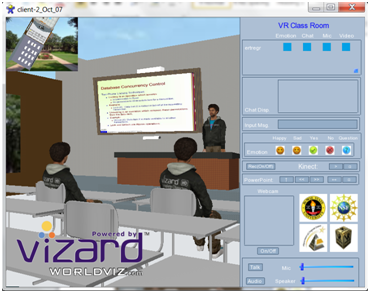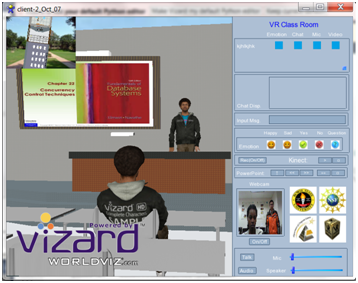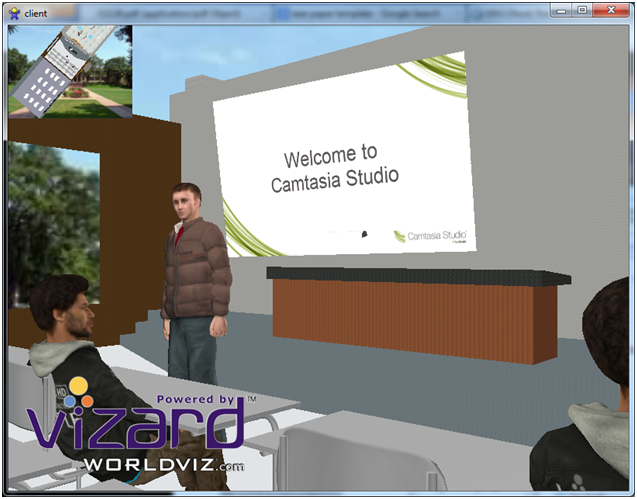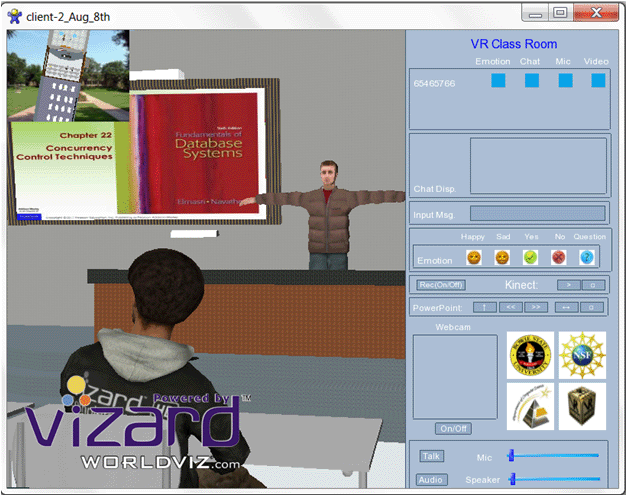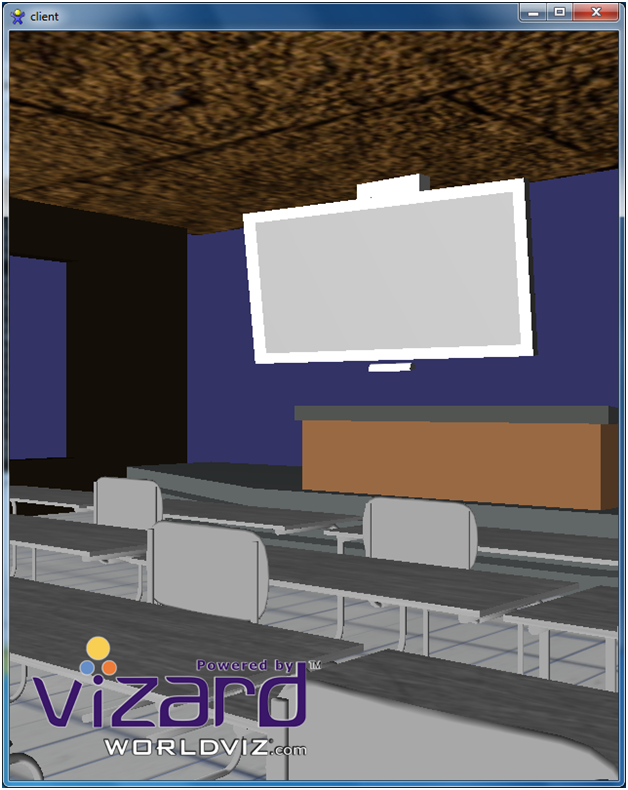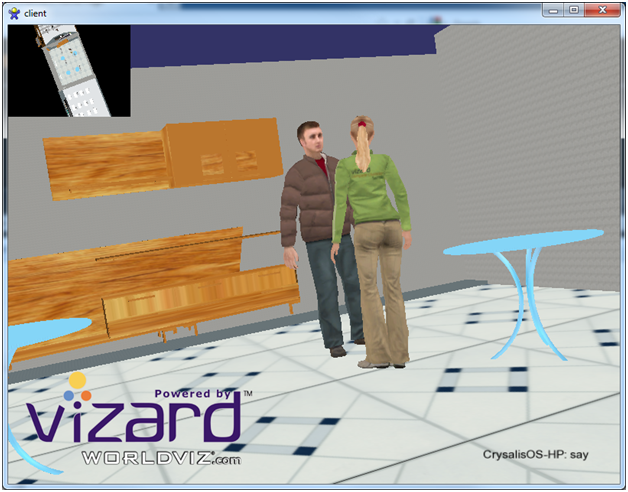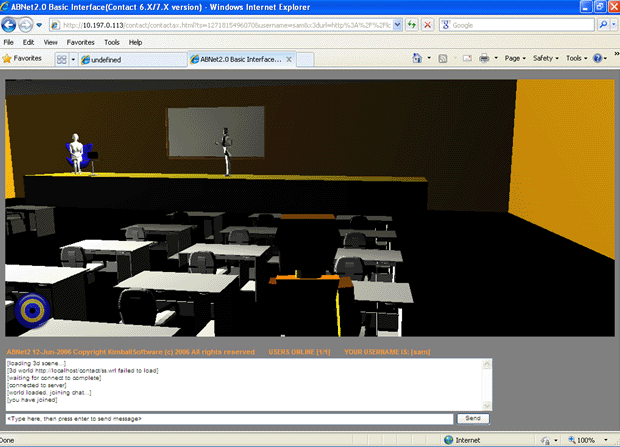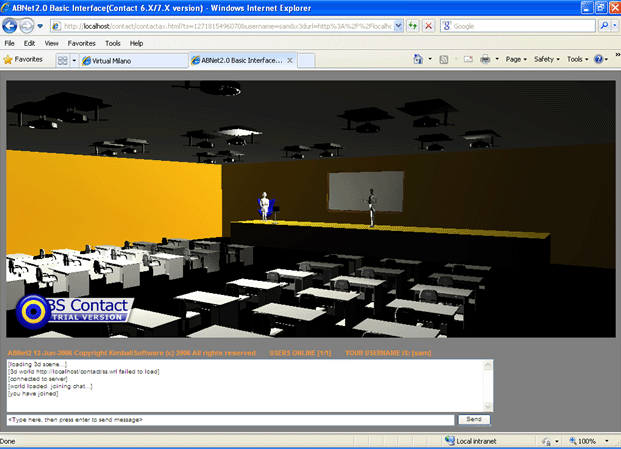 |
|||||||
| Home | |||||||
| |
|||||||
| |
|||||||||||||||
Virtual Reality Classroom: Educational Virtual Learning EnvironmentStudents: Wenhao Chen, Roy Brown, and Jeff Ruffin Status: Current This project presents a Virtual Reality Classroom environment that is similar to second life. The online virtual classroom is developed so that students can interact with each other and study together. Teachers can also use this mode for delivering lectures in an online virtual environment. The purpose of this project is to use a virtual reality classroom as a learning tool for education and for students that are enrolled in online classes. Our research focuses on how to create a virtual instructor and virtual students and how to integrate them into the online virtual reality classroom. Our goal is to model cooperative learning attributes like misbehavior, catching them early behavior, etc. to produce animation of a virtual environment populated with virtual avatars. The proposed system is a collection of different Virtual Classroom model environments created in 3DS Max and exported to WorldViz Vizard which constitute the base of this application. Animations and interactivity were added to the environment through a variety of techniques. For instanced Vizard scripts (in Python language) were used to animate students walking and chatting with each other. Collision detection was implemented through simple Vizard scripts to keep users from passing through buildings, other users, and other object in the environment. The aim was to create an environment that was as close to a real world environment as possible. In the VR classroom the students will be able to interact with fellow students and teachers through a server/client feature. Currently, on the server side the VR classroom environment consists of eight classrooms with two student lounges with distinct individual textures. On the client side the user will be able to log into the server as an avatar of his/her choice through a drop box provided to the user. They will also see the avatars of fellow students and teachers logged in the environment with a name label popup. In the current system people can navigate the virtual classroom as a student or as an instructor through the use of keyboard inputs. We would also like to implement alternative modes of inputs such as head mounted displays, and data gloves. Accomlishments:
Publications
Previous Work:Modeling and VRML The earlier version of the multi-user VR classroom was built on top of ABNet. The first stage involved modeling the building and classrooms using 3ds Max and Form Z software’s.The second stage in the creation of the application involves converting the 3Ds max file to VRML (Virtual Reality Modeling Language) file. The 3D model of the building modeled in 3D Max was exported to a VRML file.
The above figure shows our developed multi-user classroom environment having the chat functionality implemented using ABNet. We explored VRMLWorld.net that is an X3D/VRML chat gateway powered by ABNet. The client side of ABNet uses Javascript on an HTML page to turn a single-user VRML (Virtual Reality Modeling Language) world into a Multi-user Virtual World environment. 3D Avatars can interact and use shared events to provide a virtual experience. This interface allowed addressing complex tasks by connecting the VRML web browser plug-in with a Java applet within the same web page.
|
|||||||||||||||
| |
|||||||||||||||
